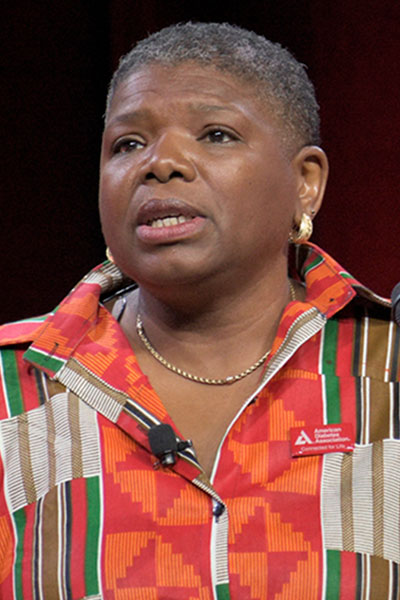
It is time to stop talking about diversity in clinical trials and time to act, says American Diabetes Association® (ADA) President of Health Care & Education Janet Brown-Friday, RN, MSN, MPH.
“When racial and ethnic minorities make up 40% of the U.S. population, 75% of the 32,000 participants in the trials of 53 novel drugs approved by the FDA in 2020 were white,” she said. “It is time to turn policy into action by making trial funding contingent on demonstrated compliance with policies requiring phase 3 clinical trials to be designed to permit analysis by sex/gender, race, and ethnicity, and to actively recruit and retain women, monitories, and their subpopulations.”
Ms. Brown-Friday called for action on health disparities in her address “Diversity in Clinical Trials: A Complicated Issue, Not a Simple Solution” on Saturday morning during a session also featuring remarks from the ADA chief executive officer and the Outstanding Educator in Diabetes Award Lecture. Health inequity is obvious and widespread, she said. It contributes to worse outcomes and higher risk for diabetes, and it undermines the well-being of the most underserved communities.
The entire session can be viewed by registered meeting participants at ADA2023.org. If you haven’t registered for the 83rd Scientific Sessions, register today to access the valuable meeting content through August 28.
Medical research involving minority populations has a long and sordid history, Ms. Brown-Friday said. In the 1850s, renowned gynecologist Dr. James Marion Sims performed surgical procedures on enslaved Black women without anesthesia.
The USPHS Syphilis Study at Tuskegee followed the natural history of untreated syphilis in Black men from 1932 to 1972. Participants were denied highly effective treatments, including penicillin, which had become standard of care by the mid-1940s, and were actively discouraged from seeking medical advice or care outside of the study.
Tumor cells from Henrietta Lacks’ aggressive cervical cancer were shared with a researcher without consent in 1951. Those unconsented biopsy samples gave rise to the immortal HeLa cell line widely used in cancer, immunology, infectious disease, and COVID-19 vaccine research.

In 1989, researchers took blood samples for the Havasupai Tribe Blood Study, ostensibly to study a potential genetic link to diabetes. But under a broad consent, samples were used to study schizophrenia, inbreeding, alcoholism, and more. The tribe sued and won.
“The main barrier to making clinical studies more diverse is mistrust of the medical community,” Ms. Brown-Friday said. “We must prove, through action, that we are, indeed, worthy of trust. That starts with admitting to the atrocities and trauma that created the mistrust and our health inequities.”
It is equally important to improve access and accessibility to clinical trials and to change recruitment approaches for both trial staff and participants.
“Participating in a clinical trial should not be a financial burden,” Ms. Brown-Friday said. “Use study resources to minimize costs for participants. If transportation to the study site is an issue, pay for it.”
Research staff, scientists, and clinical providers should be as diverse as the study population. Diverse clinical staff isn’t just for the looks, she added. Diversity is a practical benefit in terms of recruiting and retaining participants, understanding their needs and concerns, and helping them remain engaged with the trial.
“Where you recruit affects who you enroll,” she added. “Researchers must go into the community using plain language and no medical jargon. You get the best bang for your buck using multimedia approaches to build community awareness, support, and participation in your study.”
A few studies have gotten it right, Ms. Brown-Friday said. The Diabetes Prevention Program (DPP) was designed to enroll about half of participants from racial and ethnic minority groups and succeeded. She was study coordinator for the Albert Einstein Medical College DPP site in the Bronx. Study staff was as diverse as the population, hailing from Armenia, Iran, the U.S., Mexico, Haiti, and a half-dozen other countries.
The Glycemia Reduction Approaches In Diabetes: A Comparative Effectiveness Study (GRADE) protocol called for a cohort representative of the type 2 diabetes population across the U.S. by race and ethnic group. The final cohort was 19.9% Black and 18.6% Hispanic.
“Let’s be the change we want to see,” said ADA Chief Executive Officer Charles D. Henderson. “Where we talk about health equity, we have to act. We have to be about the people we serve.”

